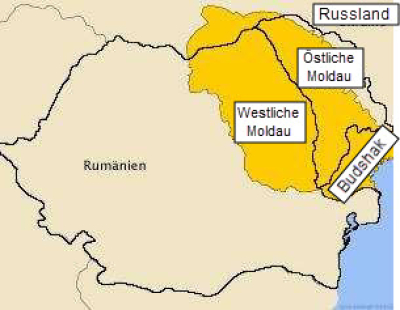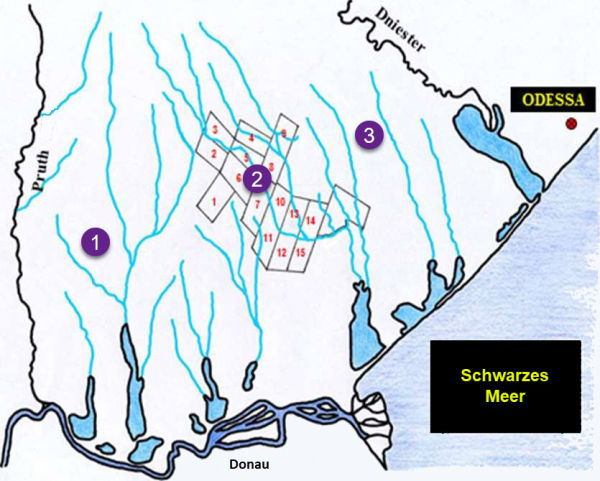_English_
User Tools
Site Tools
Sidebar
3.2.2 Russia wins Bessarabia in 1812
Russia fought the 7th Russo-Turkish War between 1806 and 1812. On May 28, 1812, Russia had to conclude the Peace of Bucharest in order to focus on the expected attack by Napoleon. Russia was granted the eastern half of the Principality of Moldavia (called Eastern Moldavia in map) and the Budshak.\ The border between the Ottoman Empire and Russia now no longer ran along the Dniester River, but 100 km to 125 km further west, along the Prut River.
Russia now extended the term “Bessarabia” (Turkish Budshak), which originally applied only to the southern part, to the entire territory.
Nomadic Tatar tribes from Budshak were expelled or left voluntarily. In their place tenants settled: Bulgarians, Moldovans, Russians, Ukrainians, who paid rent to the Russian state. They used the vast areas as pasture for their herds.
The Russian administration began to systematically exploit the steppe areas of southern Bessarabia from 1813. The uncultivated steppe land was to be transformed into productive land. New settlers were to improve agriculture on the fertile black earth soil and at the same time become model farmers for the backward Russian agricultural economy. But this required immigrants from foreign countries. Russian peasants seemed unsuitable; they were still in serfdom for a long time.
Russia was particularly interested in German settlers.
The settlement districts in Bessarabia were already demarcated before the arrival of the colonists, the boundaries of the individual areas were marked out and numbered.
The Budshak was the landscape where German colonists were settled.
The Russians had surveyed the Budshak in 1812/1814 and divided the area into land parcels of different sizes. The parcels of land and the layout of the settlements were predetermined by the Russian settlement authorities. The newly created villages all had the same settlement layout as a street village.
Besides Germans, other nationalities were also settled under similar conditions: Bulgarians, Ukrainians and Swiss. It was Russian policy to establish ethnically uniform villages, i.e. only Germans, only Bulgarians, etc. lived in one village. The villages were recognizable by their respective typical national character.
Designated areas for
- Bulgarians
- German colonists
- deserving Russian noblemen



